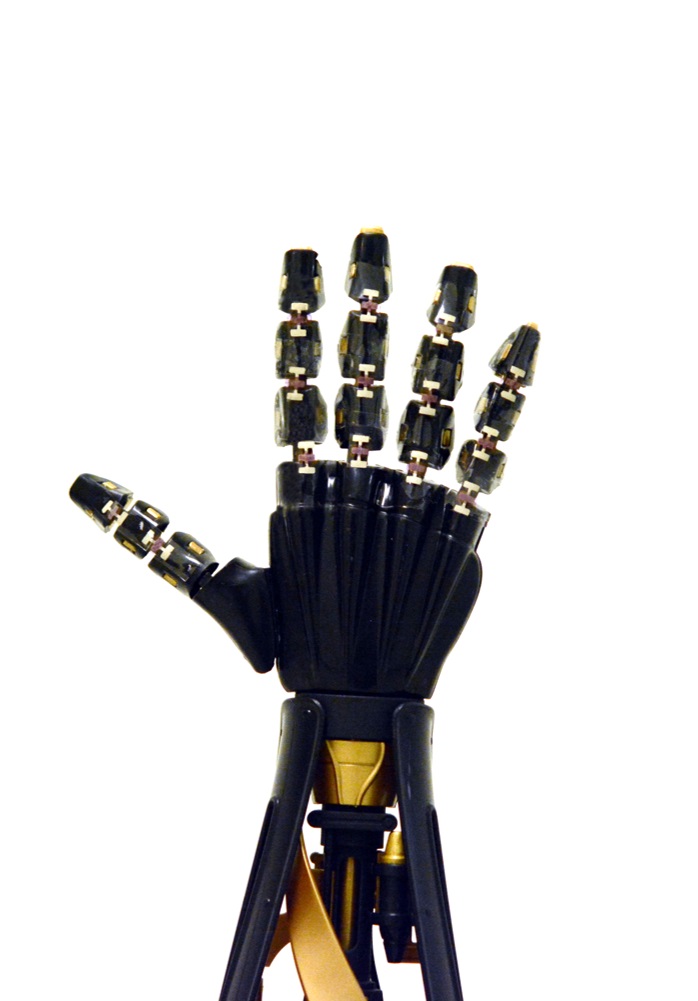A breakthrough in stretchable electronics has been made this month as researchers from the University of Houston develop an artificial skin that allows a robotic hand to feel the difference between hot and cold temperatures. As well as being useful in the application that it’s been demonstrated this type of material could be advantageous in a whole range of other biomedical devices.

The research involved developing a mechanism that could produce such stretchable electronics capable of being used in commercial products. Lead author of the paper and Assistant Professor of mechanical engineering, Cunjiang Yu said this is the first time anyone’s managed to create this kind of rubber semiconductor. Even after the electronic parts are stretched by up to 50 percent functionality is retained.
Yu also noted in the study how traditional semiconductors often break and become brittle, so using them as a stretchable material requires a very complex processing system which is far less stable and far more expensive than the new discovery. “Our strategy has advantages for simple fabrication, scalable manufacturing, high-density integration, large strain tolerance and low cost,” he says. Yu and colleagues created the electronic skin and used it on a robotic arm to demonstrate how it was able to detect both hot and cold temperatures.
As well as being able to sense temperature, the skin could also interpret computer signals transmitted in which to reproduce signals of the American Sign Language. This type of application is just the beginning. The discovery of this material will enable researchers to use in the development of more wearable electronics in the future, including medical implants and health monitors.
More News to Read
- Researcher Discovered a New Way of Eco-Friendly Disposal for Data Security and Healthcare
- NASA’s Ocean Observation Reveals Sea-Level Fingerprints
- Chinese Scientists Create Device That Converts Blood Flow Energy into Electricity
- Researches Revealed a New Clinically Tested Drugs that Inhibits the Growth of Tumours
- What Do You Think About Clothes that Grow With Your Child?

